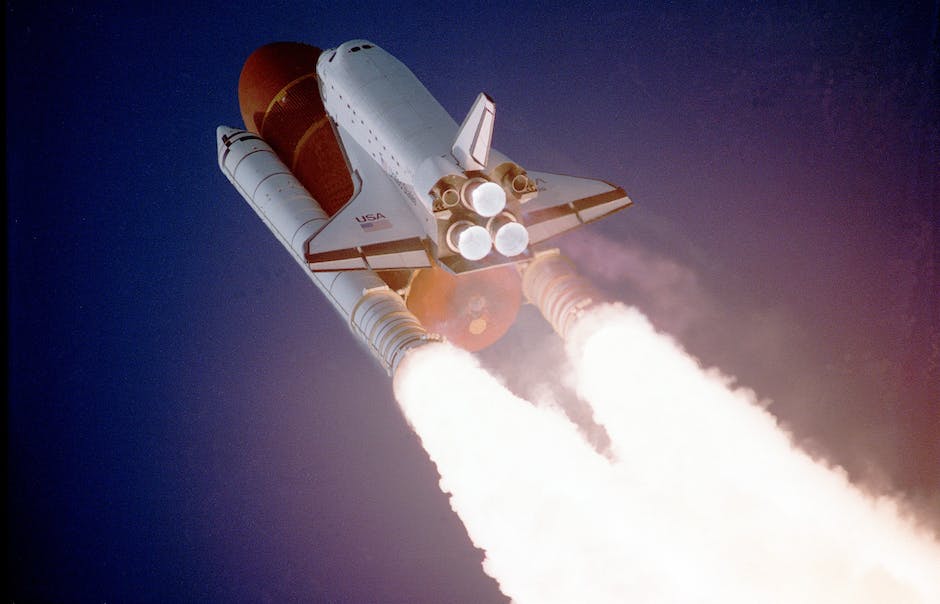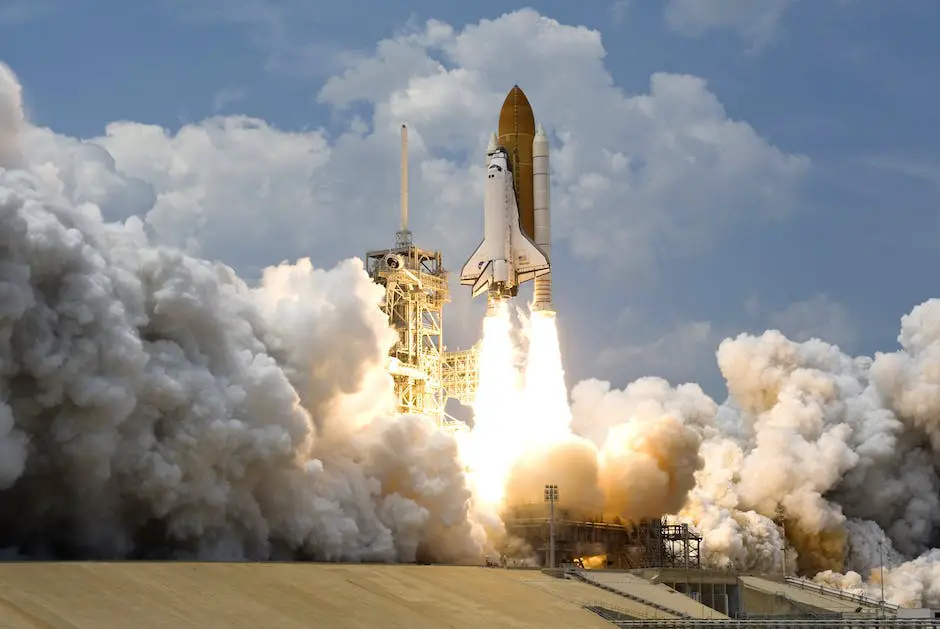In the annals of human history, the Apollo missions stand out as an extraordinary concurrence of scientific pursuit, political aspiration, and cultural evolution.
Cradled in the fabric of the Cold War, these space expeditions mirrored the escalating rivalry between the United States and the Soviet Union, serving as a captivating tableau for the fight for ideological superiority.
Not merely a test of technological prowess, the Apollo missions effectively transformed aspects of national identity, societal values, and even international relations, indelibly influencing the canvas of the 20th-century world.
In the following sections, we plunge into the various layers of the Apollo missions’ impact, from the geopolitical dynamics of the Space Race to the enduring consequences on science education and policy.
Contents
Cold War and the Space Race
Cold War and the Space Race
The Cold War, spanning from the end of World War II in 1945 to the dissolution of the Soviet Union in 1991, was a tense political, ideological, and military standoff between the two superpowers of the world, the United States and the Soviet Union. This era was marked by various regional wars, arms race, and most notably, the space race.
The space race, heavily dominated by the U.S. and USSR, was a competition of space exploration capabilities. It was more than just scientific and technological rivalry, it was a battle for ideological supremacy, each nation striving to prove the dominance of their social, political and economic systems.
The space race began in 1955 when both countries declared plans to launch artificial satellites to orbit the Earth. The USSR took an early lead with the successful launch of Sputnik 1, the first-ever artificial satellite, in 1957. Then in 1961, the Soviet astronaut Yuri Gagarin became the first man to orbit the Earth.
The Apollo Missions and America’s Reassertion
In America, the Soviet achievements in space exploration were a source of national embarrassment, provoking a robust response from the government. In a speech to Congress in 1961, President John F. Kennedy committed America to landing a man on the moon and returning him safely to Earth before the end of the decade, effectively launching the Apollo program.
The Apollo missions were an assertion of America’s technological and scientific capabilities. These missions were part of a broader strategy of demonstrating to the world that the United States’ capitalist democratic model was superior to the USSR’s communist system.
The success of the Apollo missions, especially Apollo 11 in 1969, which successfully landed American astronauts Neil Armstrong and Buzz Aldrin on the moon, dramatically shifted global perceptions. It became a powerful symbol of American scientific, technological, and organizational prowess. It showed the world that a free society, where individuals and private enterprise were encouraged to innovate and excel, could achieve great feats.
Political Implications of Apollo Missions
The Apollo missions enacted a significant role in the chess match of power during the Cold War, bolstering America’s position as a frontrunner on the world stage. These missions perfectly showcased the United States as a shining example of freedom, inventive capabilities, and advancements in technology.
Aside from setting the stage internationally, the Apollo program also had deep-rooted political implications on home soil. It kindled the growth of a robust science and technology sector, paving the way for an expansion of employment opportunities in these areas. This growth not only solidified America’s upper hand in scientific research and cutting-edge industries, but it also became a launching pad for its economic supremacy in the post-Cold War era.
In essence, the geopolitical underpinnings of the Apollo missions are deeply engraved in the canvas of the Cold War and the subsequent space race it ignited. The victorious culmination of these missions helped craft a narrative of American superiority domestically and on a global scale, elevating its ideological, economic, and political sway worldwide.

Nationalism and American Identity
American Exceptionalism and the Apollo Missions
Undertaken by NASA, the Apollo missions were a triumphant expression of American exceptionalism on the global arena. This concept implies that the United States holds a distinctive stance among other nations, a result of its singular origin, national creed, historic path, and unique political and religious structures. The successful touchdown on the moon in 1969 materialized this notion, underscoring the grandeur of American scientific might and spirit of exploration.
In the shadow of the ongoing Cold War, the Apollo missions bore a political significance as well. The race for space supremacy between the two global heavyweights, the USA and the USSR, was in full swing. Viewed against this backdrop, the success of the moon landing became the defining moment in establishing American superiority over its Soviet adversary.
Astronauts as National Heroes
Another characteristic element during the Apollo missions was the framing of astronauts as national heroes. These astronauts, who risked their lives to venture into the unknown realm of space, came to embody bravery, dedication, and patriotism.
Their stories resonated with the American populace and the world, inspiring generations and embodying the American ideal that individuals can achieve great things through hard work and courage. Their larger-than-life personas promoted a sense of national unity and pride, making them precious political assets.
Impact on Public Morale
The Apollo missions significantly uplifted public morale. Viewing the missions as a testament to American ingenuity, people began to believe more fervently in their nation’s capabilities. The successful Apollo 11 mission, which put the first man on the moon, was a globally broadcasted event that cemented the United States’ position as the leading global superpower. This victory instilled a sense of pride, inspired optimism, and boosted national confidence during a time riddled with Cold War tensions.
Influence on American Culture
The Apollo missions left an enormous footprint on American culture. The phrase “If we can put a man on the moon, we can do anything” has become an enduring part of American vernacular, symbolizing the belief in the power of human ingenuity and American exceptionalism.
The missions have inspired countless works of art, literature, film, and music – tracing from David Bowie’s ‘Space Oddity’ to the film ‘Apollo 13’ and beyond. The heroism of the astronauts and the suspense and drama of the missions captivated storytellers and audiences alike, continuing to permeate society decades later. These cultural ramifications have evolved into political implications, with space exploration becoming a symbol of national pride and ambition.
Several political dialogues and educational reforms have been affected by the Apollo missions, demonstrating that lofty national goals could be achieved through collective effort. The idea of using space exploration as a unifying public cause – demonstrated during the Apollo era – continues to influence national strategy on scientific, technological, and educational fronts.
The ‘Apollo Effect’, referring to the surge in interest and academic performance in STEM fields following the Apollo missions, serves as a testament to the missions’ lasting legacy. Such missions serve to elevate the public’s perception of science and technology, influencing policy support for STEM education.
The Widespread Impact of Apollo Missions
The influence exerted by the Apollo missions extends beyond the realms of scientific exploration and into the fabric of American nationalism, politics, and cultural identity. These missions have become potent symbols of American exceptionalism, reflecting the extraordinary capacity for human achievement and the unifying power of a shared national objective.

Federal Funding and Political Priorities
Monetary Provision for The Apollo Missions
The largely federal-funded Apollo missions were indicative of the United States’ intense dedication towards the space race during the Cold War epoch. In a bid to ensure the successful lunar landing of humans, NASA received substantial financial aid from the US government, as seen in 1966 when NASA’s budget accounted for a remarkable 4.4 percent of the entire federal budget.
These massive investments were motivated not solely by the thirst for scientific discovery but were also driven by factors such as national pride and geopolitical competition. In effect, the Apollo missions served as a profound political declaration on the global stage.
The shift in Political Priorities
However, as the success of the moon landing was achieved, a noticeable shift in political priorities emerged. Even while the Apollo missions were still ongoing, funding for space exploration began to decline, reflecting a change in political appetite. This shift was partly due to public pressure to address domestic issues such as poverty, civil rights, and healthcare, which required significant resources.
This shift in political priorities marked the end of the Apollo program and the beginning of an era of more constrained budgets for NASA.
The debate over Resource Allocation
The allocation of substantial resources to the Apollo missions, particularly during a time of numerous social issues in the U.S., continues to spark debates. Critics argue that such funds could have been better used to address rampant poverty or to improve education.
On the other hand, proponents of the Apollo missions argue that the benefits gained from space exploration, including technological development and inspiration for future generations, justify the expense. They also maintain that the money spent on space exploration is not zero-sum and that spending on space does not necessarily detract from the ability to address social issues.
Funding Implications for Future Space Exploration from the Apollo Missions
The discourse regarding the funds allocated to the Apollo missions holds considerable weight when considering the future financing of space exploration. Domestic issues have consistently been assigned significant priority, leading to somewhat constrained budgets for space ventures.
Although NASA has retained enough funding to maintain the functionality of its crucial programs, the precedent of considerable budget increases, akin to those seen in the Apollo era, is infrequent. The political drive to finance comprehensive and costly projects, similar to those in the era of Apollo missions, seems to be restrained.
There has been a notable shift in the recent years concerning how space exploration is financed, with private companies starting to play an increased role. A new era in space exploration is being ushered in which is characterized by collaborations between government bodies and private entities. This progressive transformation has altered the formerly mostly government-funded domain into a commercial space. The trajectory of this shift is set to continue, reflecting the adaptations in both political and economic landscapes.

Apollo Missions and International Relations
International Relations Impact of the Apollo Missions
The Apollo missions, conducted by NASA, the United States’ space agency, during the 1960s and early 1970s, significantly shaped international relations and positioned the U.S. as a pioneering nation in space technology. This demonstration of America’s advanced technical capabilities played a crucial role in the larger arena of the Cold War competition against the Soviet Union.
As part of the ‘Space Race’, a strategic subset of the Cold War, both superpowers endeavored to assert their technological and ideological supremacy.
The triumphant lunar landing by Apollo 11 in 1969 served as a considerable propaganda triumph for the U.S., and was viewed worldwide as an emblem of American technological superiority. This victory bolstered the U.S.’s position as a global leader in space technology and consequently enhanced its prestige on the international stage.
The triumphant Apollo missions played a significant role in shaping U.S.’s relationships with other nations. The dominance in space technology suggested military and economic supremacy, influencing the worldwide power balance.
This upper hand not only allowed the U.S. to guide the direction of global space exploration but also provided leverage during the negotiation on space treaties such as the Outer Space Treaty of 1967, which disallowed the military utilization of celestial bodies.
Sharing Technology and Knowledge: Apollo and Global Partnerships
The political implications of the Apollo missions extended to issues of technology sharing and the establishment of international collaborations in space exploration. The very nature of space exploration necessitates multinational cooperation due to its enormous costs and extensive scope of expertise required.
However, sharing technology has had its share of complications, with the US worried about potential threats to national security and commercial interests. US international space partnerships have thus often been characterized by a delicate balance between cooperation and competition.
A notable example is the US’s relationship with European countries via the European Space Agency (ESA). While there has been the sharing of technology for joint exploration missions, tensions persist related to trade restrictions in the space industry and competition in commercial space activities.
Similarly, collaboration with Russia in space exploration, including the joint operation of the International Space Station, has seen constructive engagement, despite broader diplomatic tensions.
China, on the other hand, presents a different dynamic. The US has largely isolated China from its international space partnerships due to concerns about technology theft and military usage. However, this has pushed China to develop its own advanced space program, becoming a significant player on the global stage.
The Lasting Impact of Apollo Missions
The Apollo missions have left an indelible mark on international relations and the global space community over the years. This era of space exploration defined the United States as a central character in this dynamic field, influencing its international collaborations and conflicts. With both competitive and cooperative elements, it’s undisputed that these missions instigated a significant shift in the political facets of global partnerships pertaining to space technology.

Impact on Science Policy and Education
Impact on Scientific Research Trends and Policies
Beyond the political sphere, the Apollo missions also exerted significant influence on the direction of scientific policy and research within the United States. As these historic voyages were conducted amid the Cold War with the Soviet Union, they prompted increased government investment in science and technology.
This heightened interest in space exploration led to the reorientation of research priorities. Rapid strides were made in the fields of astronomy, astrophysics, and geology, fuelled by burgeoning federal support and funding. Furthermore, technologies central to space expeditions such as satellite and rocket development witnessed a surge in interest and investment.
Perhaps one of the pivotal outcomes was the establishment of the National Aeronautics and Space Administration (NASA), an agency dedicated solely to space exploration. As time passed, NASA has become synonymous with technological innovation, spearheading advancements in various domains such as computing, telecommunications, and aeronautics.
Impact on Education and STEM
The Apollo missions had a significant impact on education, particularly in science, technology, engineering, and math (STEM) fields. Inflamed by the global interest in the space race, the United States initiated reforms in education to foster interest in science and technology among children and young adults.
The National Defense Education Act of 1958 provided federal support for education in STEM fields in response to Sputnik’s launch. When the Apollo missions took center stage, this legislation helped fuel a surge in STEM education, leading to an increase in college graduates in these fields.
The missions also inspired a whole generation of scientists, engineers, and astronauts. Many attribute their interest in STEM fields to watching the Apollo missions unfold, leading to careers in scientific research, teaching, and technology development that continues to shape the world today.
Long-Term Technological Innovation and Industries
Perhaps the most enduring legacy of the Apollo missions is the technological innovations they spurred. The push to land a man on the moon necessitated the development of a myriad of new technologies that have since found applications in many industries.
One notable innovation is the miniaturization of electronics. The need to make equipment light enough for space travel led to developments in microchip and computer technology. These advancements played a significant role in the digital revolution that followed in subsequent decades.
Materials science also saw significant advancements. The development of lightweight, durable materials for space suits and spacecraft has found far-reaching applications in industries such as construction, automotive, and sports equipment.
In conclusion, the political implications of the Apollo missions are far-reaching, influencing science policy, reshaping education, and driving technological innovation in the United States and worldwide. The missions stand testament to the significant role that political will and public interest can play in advancing science and technology.

After traversing the complex spectrum of the Apollo missions’ repercussions, what emerges is the enduring imprint of these audacious ventures on the collective consciousness.
They catapulted the United States to the forefront of space technology, instigating new dimensions in international relations. On the domestic front, the missions amplified feelings of collective pride and nationalism, reincarnating astronauts as modern-day heroes.
They triggered critical dialogues about federal budgetary allocations and shifted the tide of science education and policy. Above all, they encapsulated the resolute human spirit, unveiling the boundless possibilities of scientific and technological exploration.
The Apollo missions, despite the somber backdrop of the Cold War, ultimately served to enrich humanity’s quest for knowledge, fostering an age of innovation and discovery that continues to resonate through the corridors of time.

With a passion for unraveling the mysteries of the moon, Dr. Luna Sterling is a highly-respected astrophysicist, a dedicated lunar enthusiast, and a captivating blogger. After earning her Ph.D. in Astrophysics from the Massachusetts Institute of Technology (MIT), she served as a lead scientist and mission planner for NASA, contributing significantly to various lunar missions.
For over two decades, Luna has been at the forefront of lunar science, pushing boundaries and pioneering discoveries that have enriched our understanding of the moon’s geological history. However, it’s her infectious enthusiasm for all things lunar that truly sets her apart.
In an endeavor to bring the moon closer to everyone, Luna started her blog, “Luna’s Lens: A Closer Look at the Moon.” With this platform, she offers a unique blend of intriguing moon facts, updates on lunar missions, and personal anecdotes from her experiences in the field, all told in an engaging and accessible manner.
Luna’s unique blend of scientific expertise and warm, humorous writing style has transformed complex astrophysics into compelling narratives that captivate her audience. As a gifted communicator, she leverages her knowledge and experience to relate scientific facts to everyday life, thus making her blog a must-read for both seasoned space enthusiasts and curious newcomers.
Interactive and inviting, Luna frequently encourages reader engagement through thought-provoking discussions and a monthly ‘Ask Dr. Luna’ feature, where she personally answers questions about the moon and space exploration. A celestial storyteller at heart, Dr. Luna Sterling’s passion for the moon is as vast as the cosmos she explores, making her an invaluable beacon in the world of lunar science.